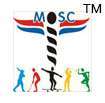The narrow passageway between the first rib and the clavicle (collar bone) is called the thoracic outlet. This space is filled with nerves, muscles and blood vessels. Thoracic Outlet Syndrome happens when the shoulder muscles in the chest becomes incapable of holding the clavicle. When such a condition occurs, the clavicle slips down and exerts pressure on the blood vessels and nerves.
What causes this syndrome?
Various factors can cause this syndrome. Some of the factors are injuries, disease or congenital problems like abnormal first rib. However, obesity and an improper posture can aggravate the situation. Thoracic Outlet Syndrome is seen predominantly in females rather than males. Some kind of psychological changes are also said to accompany the syndrome, although its exact reason is not clear.
Several categories for this syndrome is said to exist. The important sub-divisions of this syndrome are:
- Neurogenic Thoracic Outlet Syndrome: This happens to be the most common form of Thoracic Outlet Syndrome. This type is observed to be seen more in women.
- Arterial Thoracic Outlet Syndrome. The syndrome is caused when the cervical rib compresses the subclavian artery.
- Venous Thoracic Outlet Syndrome. This is caused due to the compression of subclavian vein.
Causes: Several factors lead to Thoracic Outlet Syndrome. The list below, however, mentions some the prominent factors:
- Continuously maintaining an improper posture.
- Syndromes like cervical rib syndrome, scalenus anterior syndrome, costoclavicular syndrome, hyperabduction syndrome etc.
- Subclavian muscle hypertrophy.
- Costocoracoid tendon.
- Bone overgrowth following a 1st rib fracture.
The symptoms associated with Thoracic Outlet Syndrome may vary depending upon which nerve or blood vessel gets compressed. Symptoms relating to nerve are more common than that relating to blood vessels.
When pressure is exerted on the nerves like brachial plexus, an aching pain the neck, shoulder, arm etc is experienced. Accompanying this, other symptoms like tingling, numbness etc are experienced more prominently in the 4th and 5th fingers. This can result in weakness.
Blood flow through the arm is affected when the pressure is exerted on the blood vessels. This may lead to swelling of your arms. A feeling of fatigue and a cooling sensation in the affected arm can also result.
Other symptoms like restricted range of motion or a shoulder depression can also be experienced.
Diagnosis: A proper diagnosis is concluded on the basis of the physical examinations and several kinds of tests. Physical examination involves going through the medical history and examining the arms & hands in various positions.
An important test used for the diagnosis is the ‘elevated arm stress test’. The test is performed by raising the arms above the head. Once this is done, the fists are opened and closed for 3 minutes (approx). If the symptoms are reproduced again, then the Thoracic Outlet Syndrome may be present.
For better evaluation, various imaging tests are also done. These include CT scans, MRI scans, ultrasound scan etc.
Treatment: The methods of treatment usually do not include surgeries. However, several non-surgical treatments exist.
- Physical therapy: Exercises for muscle strengthening are done so that more support is provided for the collar bone. Postural exercises help to maintain erect positions.
- NSAIDs (Non-Steroidal Anti inflammatory Drugs): These drugs are administered to relieve the pain and swelling.
- Lifestyle changes: Changes like maintaining proper postures and avoiding strenuous activities constitute these changes. For obese people, weight loss programs are also administered. The reason for this is that excessive weight can lead to more stress in the muscles that support the collarbone.
The preventive measures include exercises like corner stretch, neck stretch, shoulder rolls, neck retraction etc.











